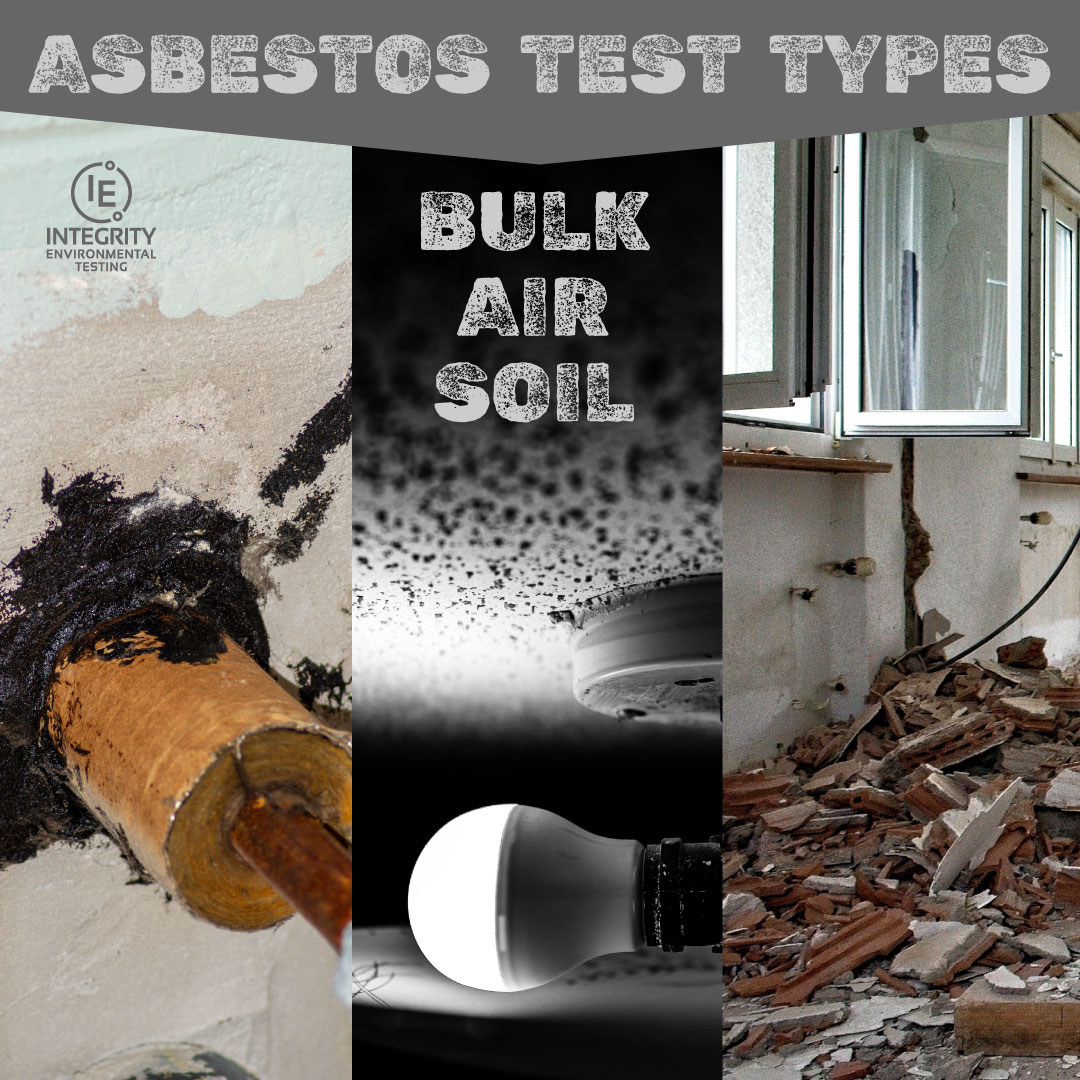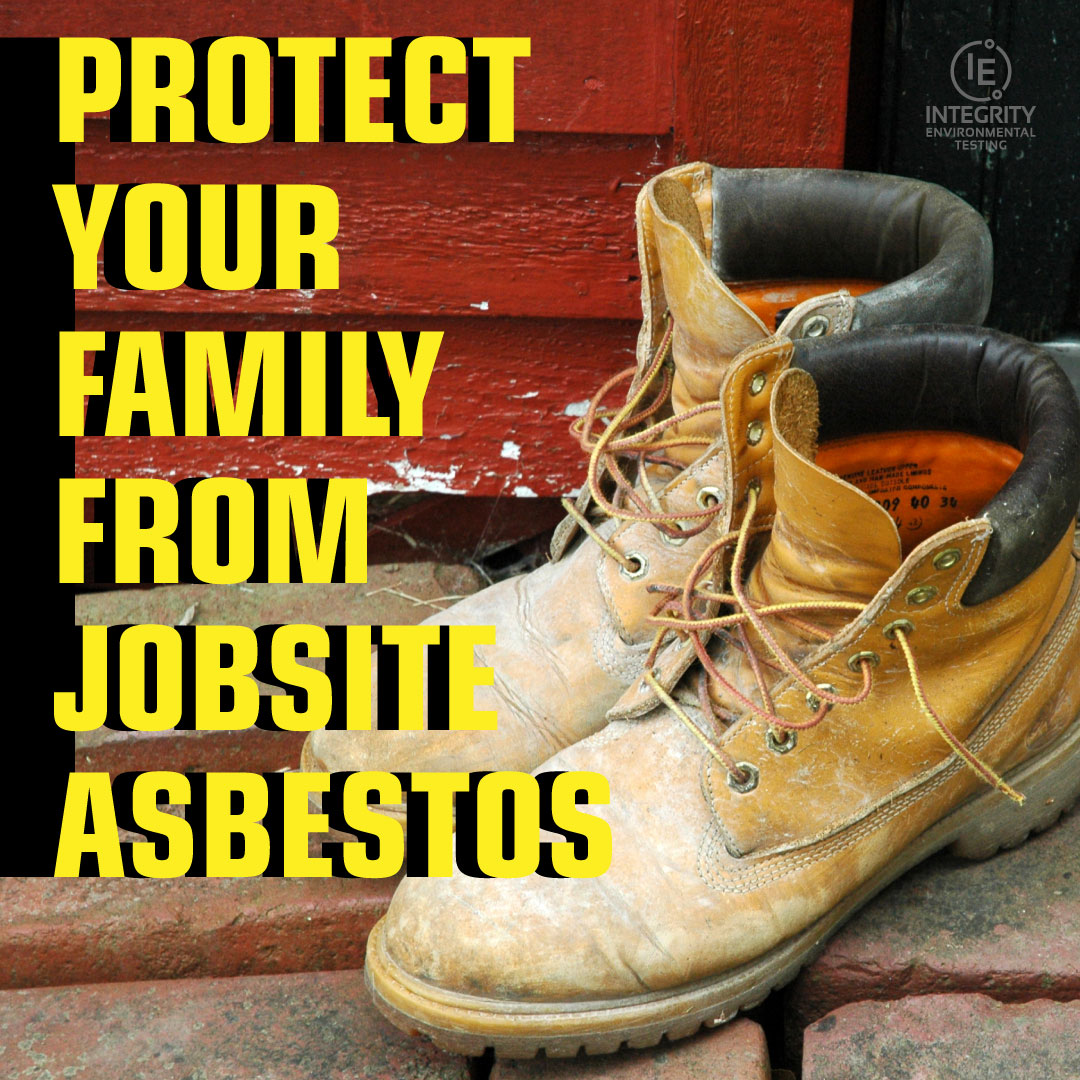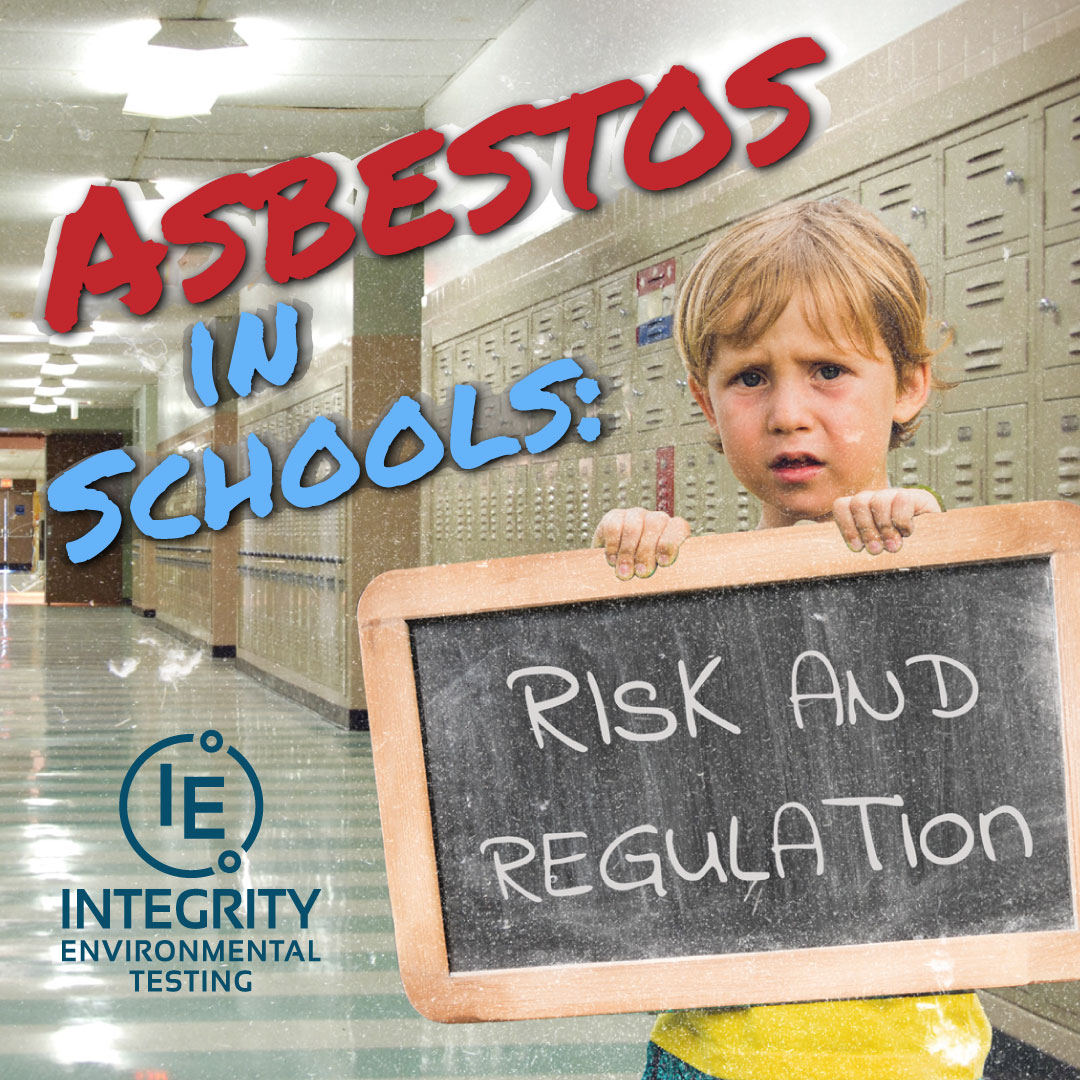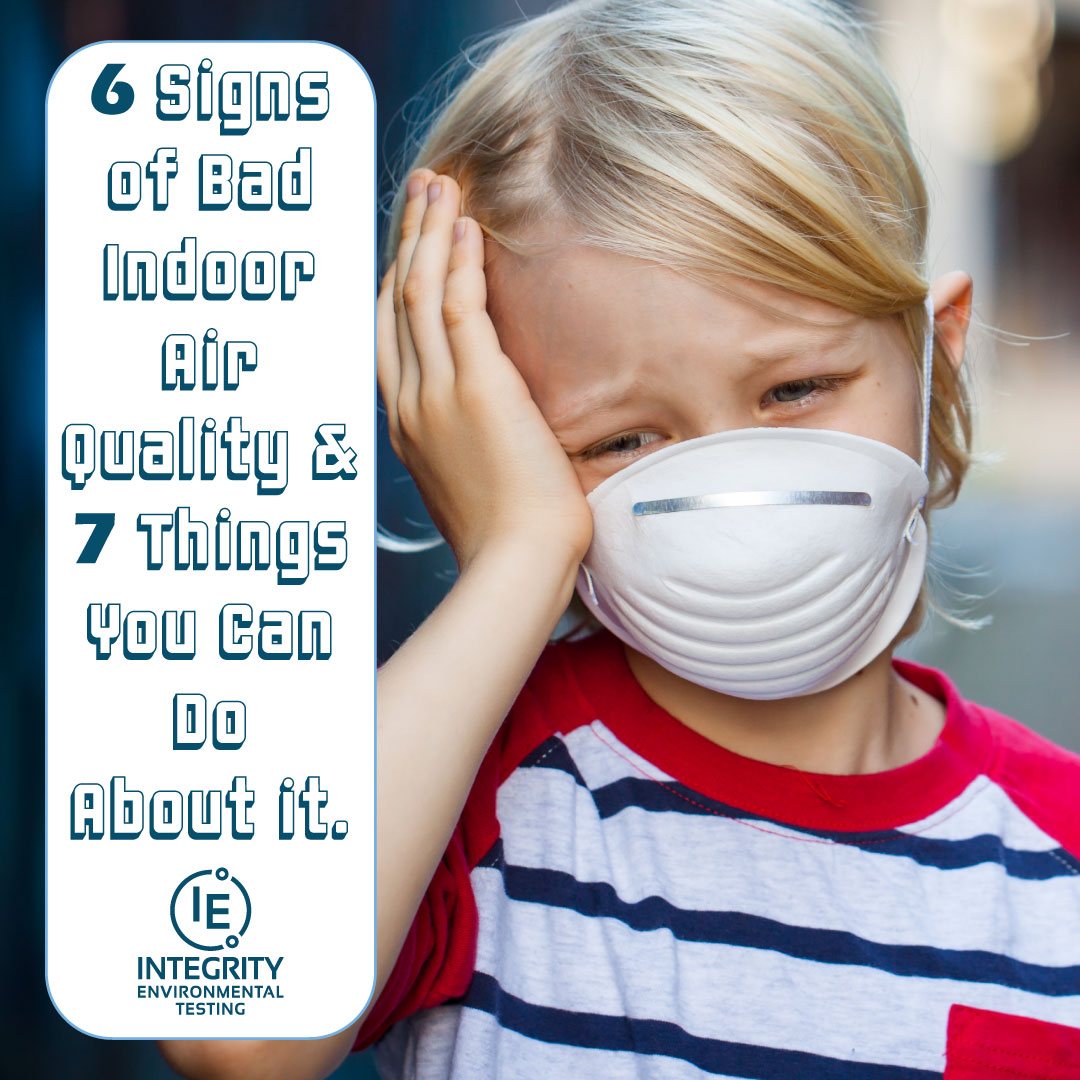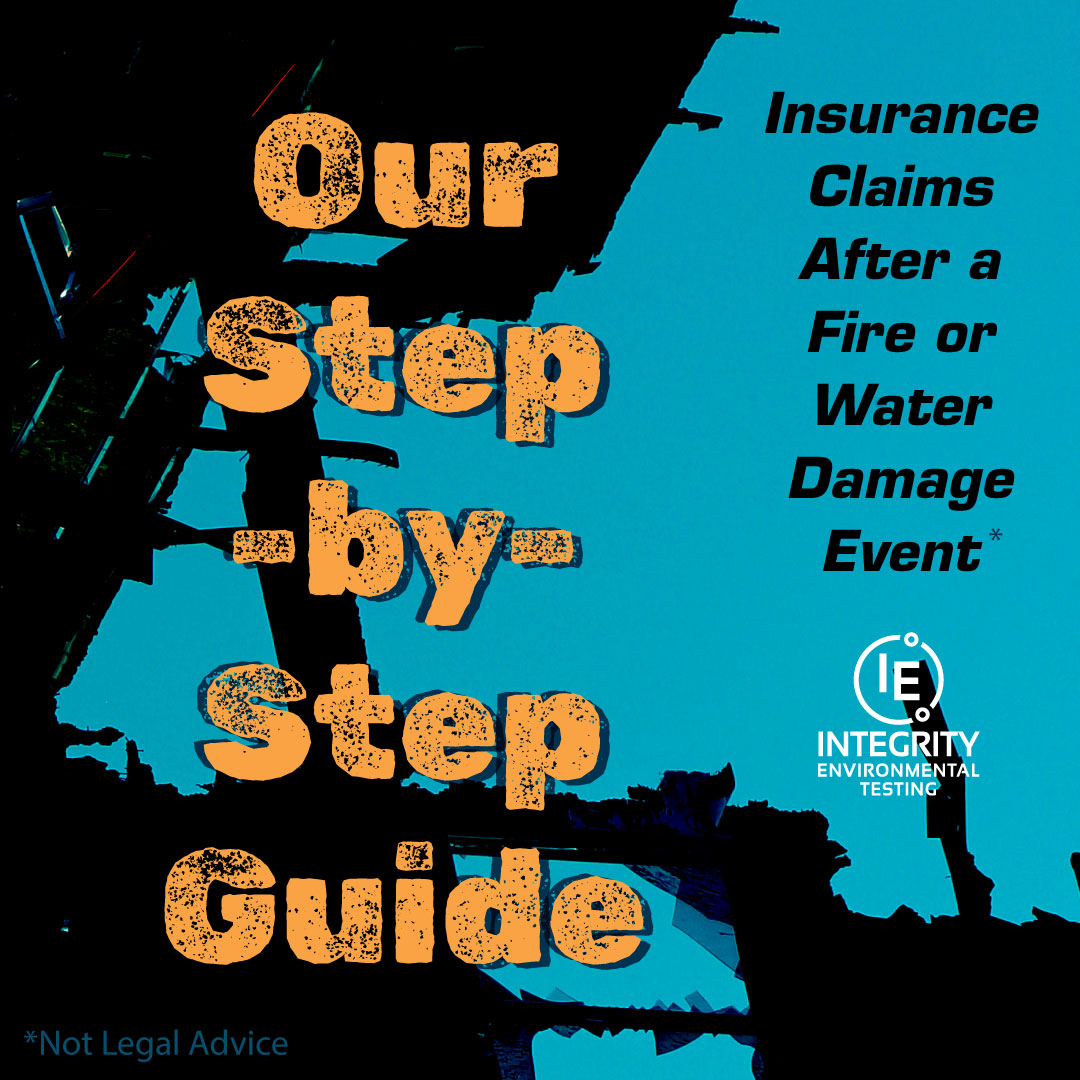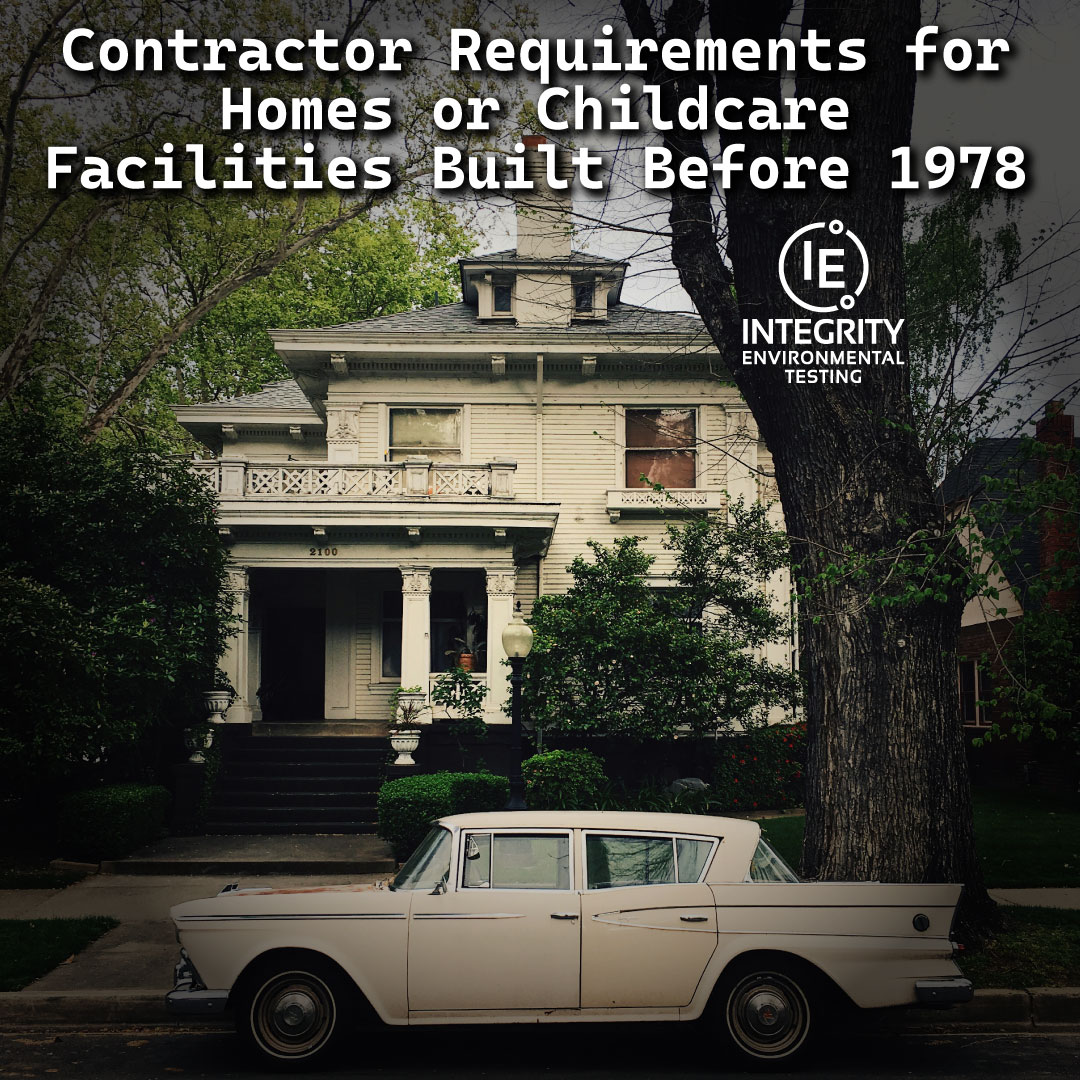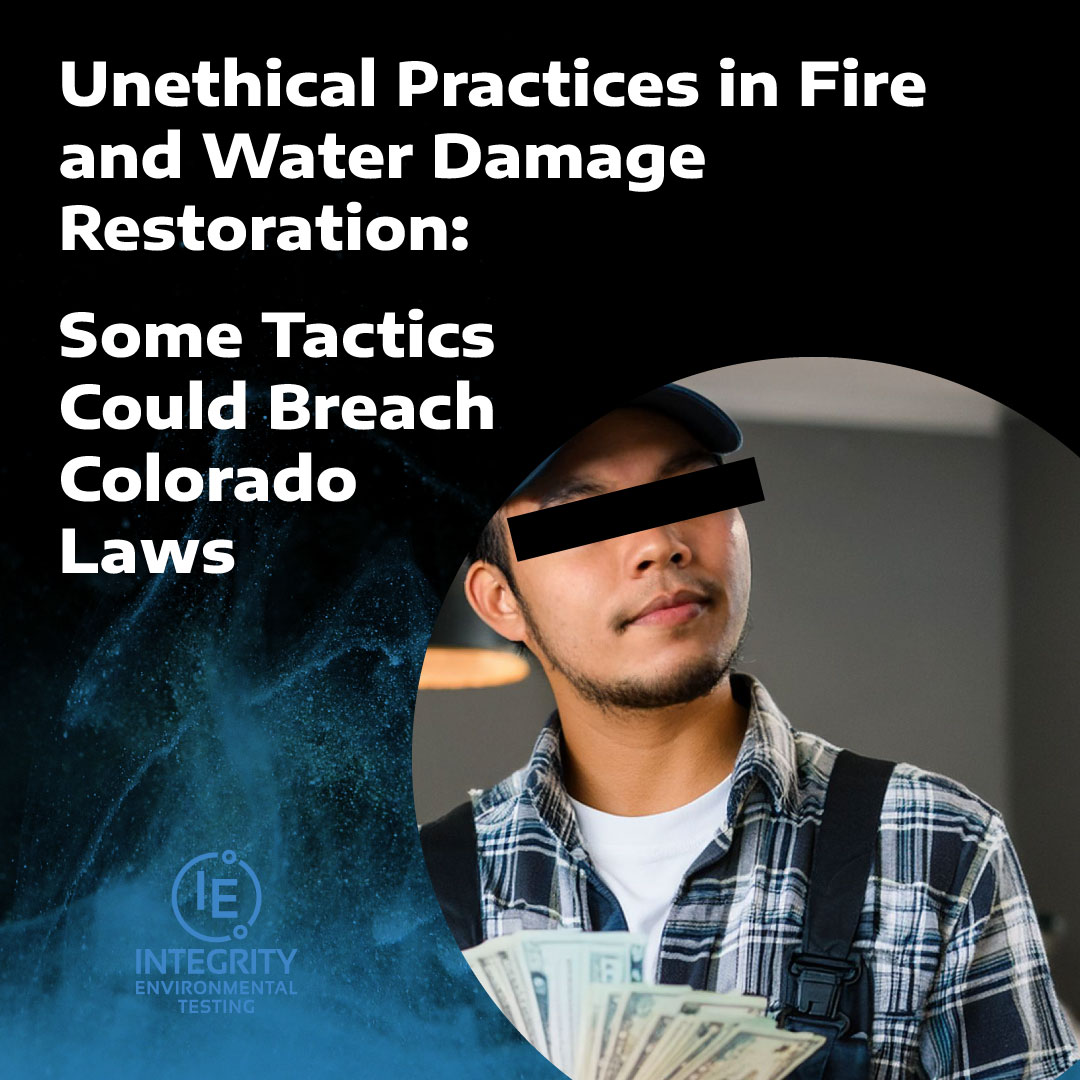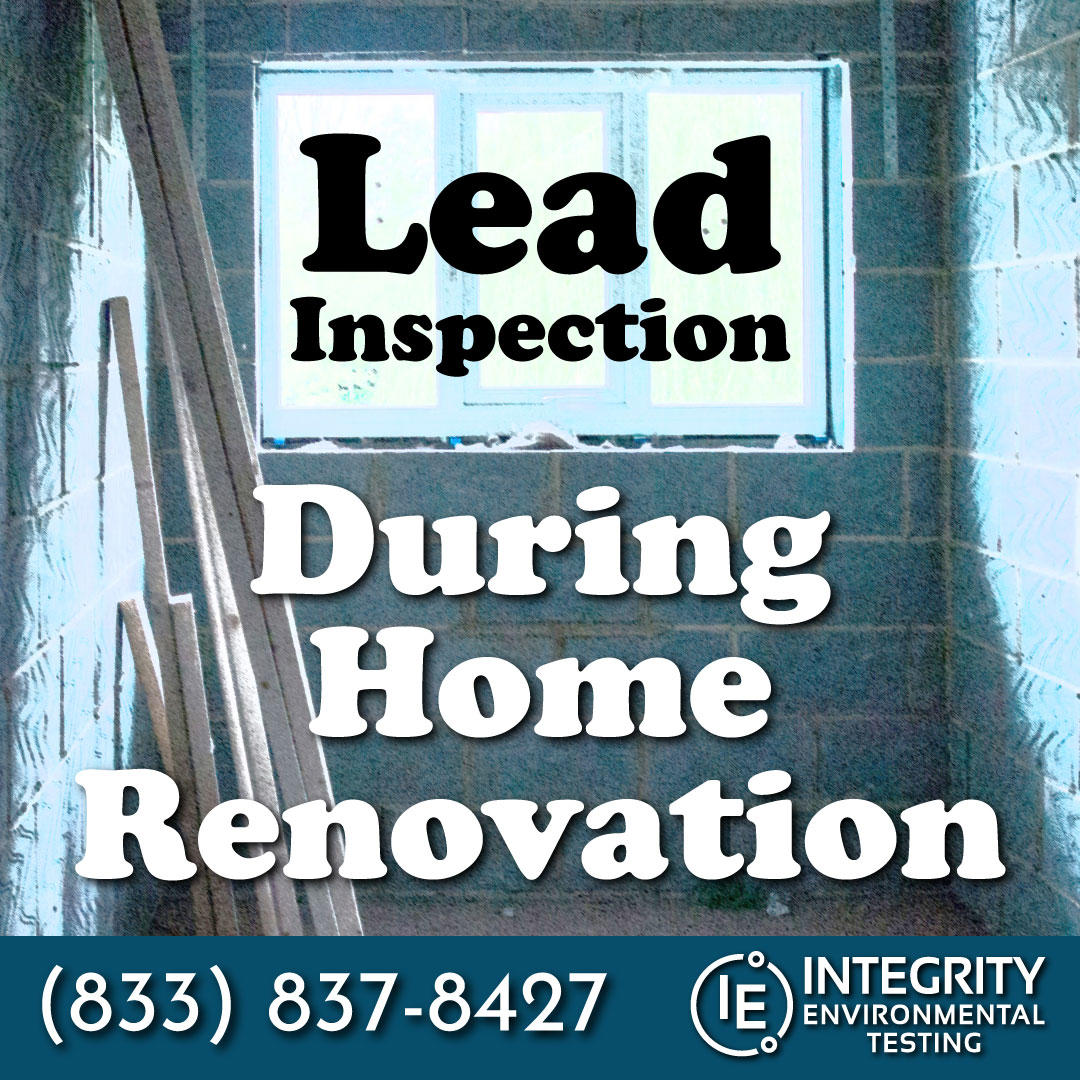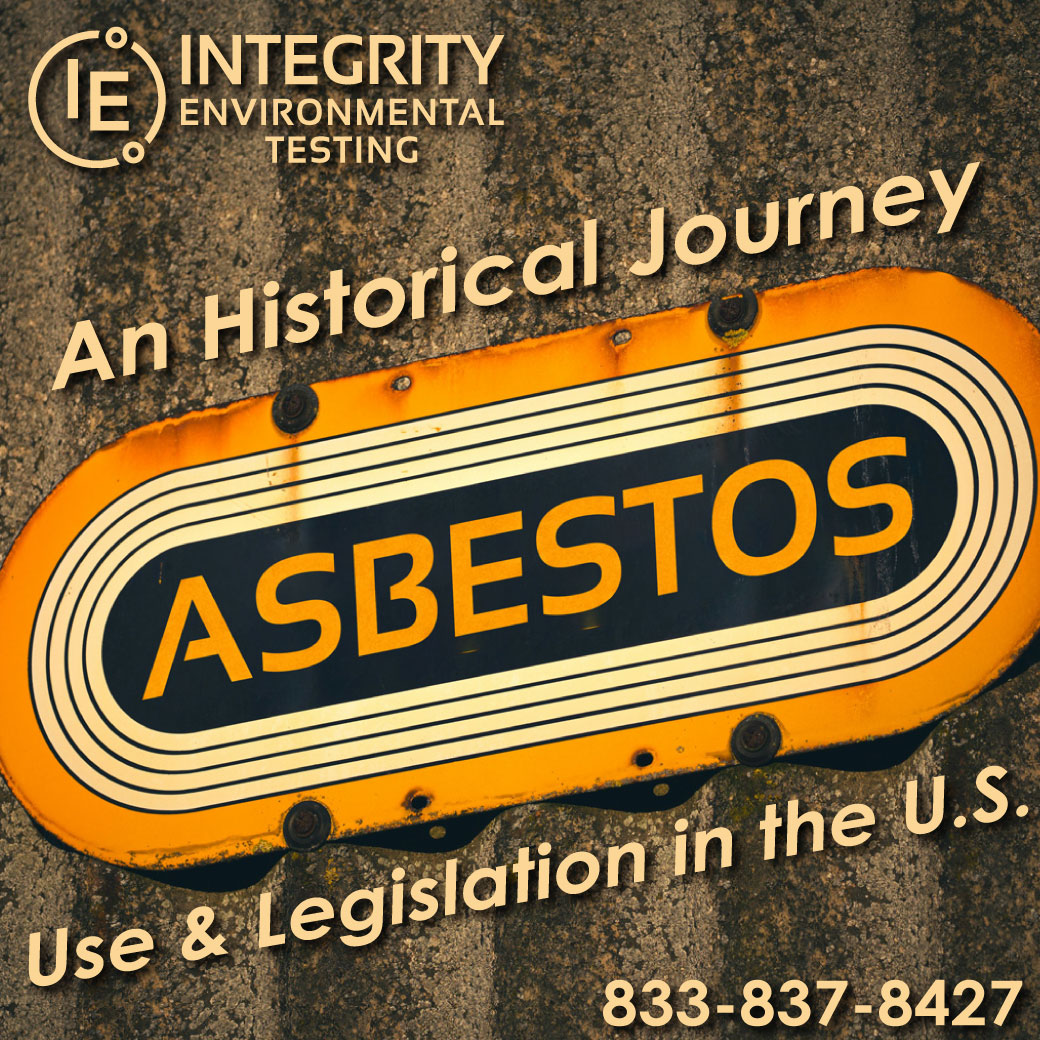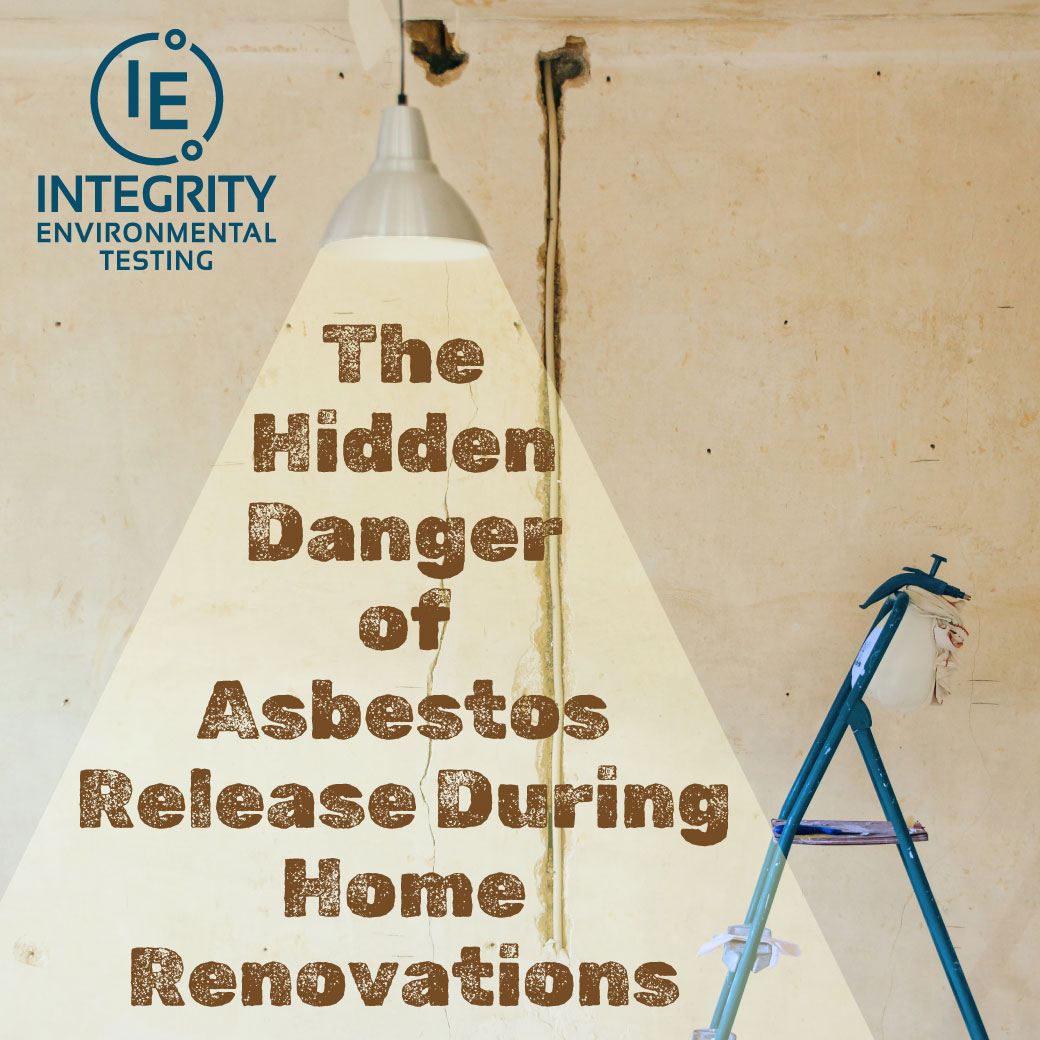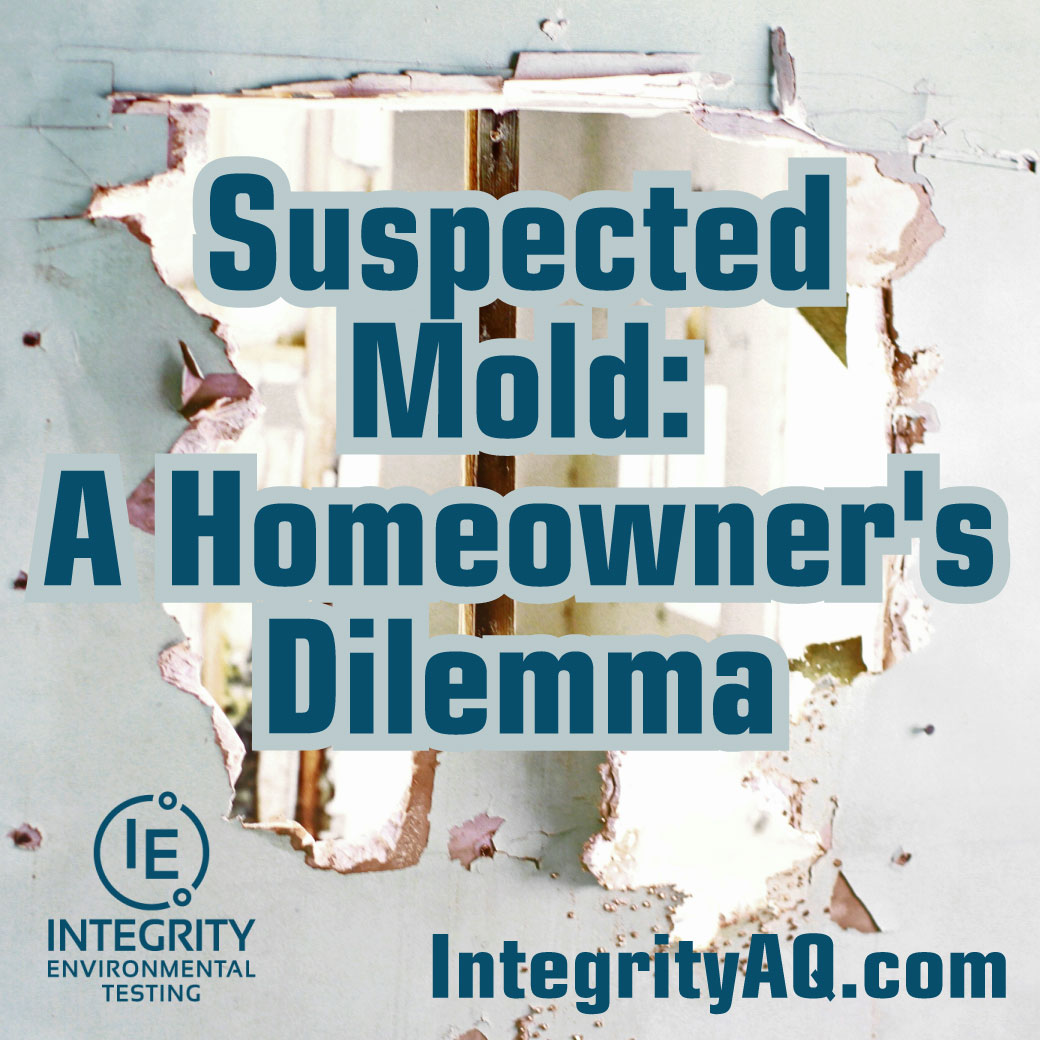SOLUTIONS WITH INTEGRITY:
Instruments, Insights, and Innovation
-
Understanding the Different Types of Asbestos Testing in Denver
Asbestos, a once widely-used material for its fire-resistant properties, is now known to pose serious health risks. To ensure safety, especially during asbestos abatement in Denver, understanding the different types of asbestos testing is crucial. This blog will explain the various methods used in asbestos testing, providing clarity on how to manage this hazardous material…
-
Increase Revenue with Category Delineation
In the ever-evolving landscape of disaster restoration, staying ahead of the curve is crucial for success. One innovative solution that is revolutionizing our industry is “Category Delineation” testing with Integrity Environmental Testing. This advanced testing methodology instantly detects biological micro-contamination present in the air, while providing a myriad of benefits that can significantly increase revenue…
-
Protect Your Family from *Potential Jobsite Asbestos
Asbestos exposure is a silent and invisible threat that can have devastating consequences on your health and the health of your loved ones. Many people work in fields that have high risk for exposure – highly regulated by state and federal regulation. If you find yourself where asbestos may be present and testing has not…
-
High-Risk Jobs for Asbestos Exposure
Recognizing Asbestos Risks and Regulations Asbestos has long been recognized as a serious health hazard. Despite regulations, many workers who are involved in industries that are related to asbestos abatement throughout Colorado, Tennessee and the rest of the country, still face the risk of asbestos exposure on the job. We’d like to discuss high-risk industries…
-
Asbestos in Schools: Risks and Regulations
Asbestos, once prized for its fire-resistant properties, is now infamous for its severe health hazards. This mineral, extensively used in construction during the mid-20th century, has been linked to serious respiratory diseases, including lung cancer and mesothelioma. Colorado schools, many of which were built during this period, still contain asbestos-containing materials, posing a hidden danger…
-
How Does Bad Indoor Air Quality Affect Your Health?
Indoor air quality (IAQ) has a profound impact on our health and well-being. Poor IAQ can lead to a range of health issues, especially for children and the elderly. Understanding these impacts is crucial for taking steps to improve the air you breathe indoors. If you are experiencing health concerns, talk to your doctor. We…
-
6 Signs of Bad Indoor Air Quality & 7 Things to Do About It
Indoor air quality (IAQ) is a crucial aspect of creating a healthy and safe environment, whether at home or work. Poor IAQ can have serious health implications, and it’s essential to recognize the signs that might indicate an issue. By utilizing this guide, you can significantly improve the air quality in your space. But, if…
-
Lead Disclosures for Property Transactions
A silent threat exists when you own or purchase a home or property built before 1978, lead-based paint. Prevalent in these older buildings, lead poses grave risks to human health, making thorough lead testing and disclosure imperative for property owners. At Integrity Environmental Testing, we’re revolutionizing the lead testing process with our state-of-the-art XRF device,…
-
Colorado Springs’ Victorian Houses and Lead
In our time machine, let’s go back to the late 1800s, when Colorado Springs emerged as a vibrant hub of activity amidst the sweeping changes of the Victorian era. With its stunning architecture and picturesque landscapes, the city was a testament to the progress and innovation of the time. However, a darkness defined the era.…
-
DIY Home Renovations: Lead Paint #2
We put together a guide on DIY Home Renovations, and what you should do if your pre-1978 home or building features lead-based paint. Before you go on – Read the First Article. First, we’d like to stress the importance of testing for lead paint when you are ready for home remodeling. If you don’t know…
-
DIY Home Renovations: Lead Paint #1
Embarking on a renovation, repair, or painting (RRP) project in a pre-1978 home with lead-based paint entails potential risks of generating hazardous lead dust. To address these risks, the EPA strongly advises homeowners to engage lead-safe certified contractors proficient in employing lead-safe work practices. These practices encompass a set of techniques aimed at minimizing lead…
-
Insurance Claims After Fire or Water Home Damage: A Step-by-Step Guide
Step-by-Step Guide for Filing a Property Insurance Claim after a Fire or Flood Experiencing a fire or flood in your home can be devastating, but knowing how to navigate the insurance claim process afterward is crucial for a full recovery. In Colorado, homeowners have specific rights and procedures when filing claims with their insurance companies.…
-
Understanding Colorado HB07-1104: Protecting Consumer Rights in Property Insurance Claims
HB07-1104 was introduced to counteract insurance companies’ tendencies to exert undue influence over policyholders’ choice of restoration companies following property damage events.
-
Contractor Requirements for Remodeling Homes or Childcare Facilities Built Before 1978
Renovating or remodeling a home is an exciting endeavor, but it comes with responsibilities, especially when working on older properties. Homes built before 1978 often contain lead-based paint, which poses significant health risks if disturbed during construction activities. In this article, we’ll explore what contractors are required to do when working on pre-1978 homes or…
-
Risks of Renovating Without Testing for Lead
Lead-based paint, commonly used in homes built before 1978, poses serious health risks, especially during renovation or remodeling activities. If that’s your home, don’t risk it: Renovating Without Testing for Lead can have consequences. “Disturbing lead-based paint without proper precautions can release hazardous lead dust into the air, putting you and your loved ones at…
-
Unethical Insurance Practices for Fire and Water Damage Restoration: Some Tactics Could Breach Colorado Laws
When disaster strikes, navigating insurance claims to bring your home back to a healthy and safe place can be overwhelming. Unfortunately, some insurance companies employ Unethical Insurance Practices for Fire and Water Damage Restoration, aimed at minimizing payouts or denying legitimate claims. Homeowners rely on insurance policies for financial protection during crises like fire, smoke…
-
Lead Inspection During Home Renovation
Before embarking on any renovation or remodeling project in a home built before 1978, it’s crucial to determine whether lead-based paint is present. Visual inspection doesn’t take the place of lead inspection. Alone it is insufficient, as lead-based paint may be concealed beneath layers of newer paint. Professional lead testing, conducted by certified inspectors or…
-
An Historical Journey through Asbestos Use and Legislation in the U.S.
The history of asbestos use and legislation in the United States is a complex narrative marked by its widespread use, scores of people with illness and disease related to asbestos, and the subsequent efforts to regulate and mitigate its hazards.
-
The Hidden Danger of Asbestos Release During Home Renovations
Are you gearing up for a home renovation project? Excited about giving your space a fresh new look? While renovations can breathe new life into your home, they can also pose unexpected health risks if proper precautions aren’t taken. One such risk is the release of asbestos fibers into the air, especially during demolition and…
-
Suspected Mold: A Homeowner’s Dilemma
Home renovation is an exciting endeavor! But, amidst the anticipation, fresh dreams and fresh beginnings, there may be a silent yet somewhat smelly menace, mold. Do you suspect mold in your abode? Let’s explore the signs of mold during home renovations, its potential risks, and how to address it effectively. As homeowners, we’re often ready…

